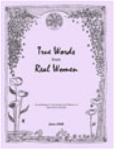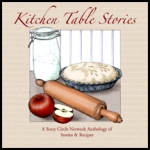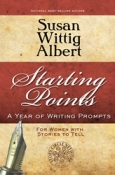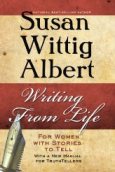By Janet Riehl and Stephanie Farrow
How safe is it to enter your study? Are you in danger of being buried alive in an avalanche of journals, letters, and conference notes?
If the ephemera of writing threatens to overwhelm you, don’t despair. You can take control. Take a deep breath and wade right in.
Our papers and body of unpublished work become more valuable as we evaluate, document, and order the tangle of our words. Knowing what to keep and what to let go is one of the toughest assignments a writer faces. It’s also one with most satisfying results.
In this keynote post we present the five tricky steps for harvesting our work—and our lives.
1) Nature Notes. We just can’t help ourselves! As writers, we jot down observations and insights as we go about our lives. It’s the naturalist in us that notices and notes. Our nature notes are the seeds we nurture into completed work.
2) Storing the Seeds. How do you collect and store these seeds? Perhaps you file your notes according to date or topic. Or maybe you file them in unlabeled, unorganized folders. (I confess that I pile my seeds in untidy heaps.)
3) Culling and thinning. Plants need room to grow. It takes not only skill but resolve to thin out plants When we cull, what we leave becomes stronger, more likely to flourish and bear fruit. With our nature notes—the notes of our lives– the challenge is in deciding what to keep and what to toss Which of our writing goes to the recycle bin, the compost heap? Which are stored for future planting? How do we keep our raw material from becoming as tangled as trumpet vines creeping up a barn?
4) Planning & Plotting. My mother wrote a piece of her life with flowers. She meticulously planned and plotted her vegetable and flower gardens. Each vegetable row and each variety of 500 day lilies was labeled. If you could read, you could go straight to any plant by following her garden map. I spent hours in her flower gardens moving labels, and digging up and re-planting flowers to create a more beautiful array. It was good training for learning to deal with my own seeds and planting.
5) Harvesting. As my mother’s gardens testified, all that tilling and toiling, seeding and weeding finally yields a good crop. Our larders were full of preserves, and we had fresh food on the table all summer and fall. Every table in the house held bouquets of fresh flowers.
After a few seasons of seeding, storing, weeding, and labeling, our harvest grows richer. As writers, our harvests yield polished work. But our work will never be its best if we can’t find the seeds we want to plant. It won’t flourish if we don’t cull the unnecessary and nurture the possible. Our job is to trim the trumpet vine so that it doesn’t bury the barn, but makes it beautiful.
_________________________________________
Hey! www.riehlife.com chosen SCN Star Blogger for March. Learn more about our audio book “Sightlines: A Family Love Story in Poetry and Music.” Become a Riehlife villager.
Are you a creative catalyst? Pose questions about practical creativity; give ideas for future cycle themes; and join in the dialog in our comments section.







I always look forward to your posts, Janet. This one has a special appeal; the analogy of gardening so personal for me. Thanks for your wisdom!
Thanks, Selena.
This is a theme Stephanie Farrow and I have been noodling around on for a year. We’d love to hear your thoughts to contribute to our series as it unfolds.
Janet Riehl
I tend to be very seasonal in thought and deed, and now that I’m in the midst of the growing season, I find myself searching for the weeds that threaten to hide the intended beauty. Someone once said that weeds are nothing more than plants that you don’t want in your garden. When weeding out the work that lies in the stacks of paper and folders on the pc, I think of the compost heap at the back of my property.
Every word I type, every sentence, paragraph and story serves me in many ways. Some are pretty good. They are the ones that bloom and make me proud of what I’ve done. Others fall by the wayside, attempts that don’t fulfill my dream. Those are the ones that teach me the most. They are the compost.
This might follow your theme, Janet. And thanks, again.
Selena,
Yes, completely in tune with our theme. I drafted a nonfiction self-help book in the early 1990s titled “Seasons of the Soul: Moving Gracefully Through Uncertain Times.” One of those dropped stitches. But, as you say, even these remain as part of the overall design.
Janet
Selena,
Yes, completely in tune with our theme. I drafted a nonfiction self-help book in the early 1990s titled “Seasons of the Soul: Moving Gracefully Through Uncertain Times.” One of those dropped stitches. But, as you say, even these remain as part of the overall design.
Janet Riehl
Glad to learn I am not the only writer with a reluctance to toss a scrap of notepaper with a seemingly pointless bit of information. What if a sudden need arises in my next chapter and I can’t seem to find that little gem?
Goodness! Yes! How did you come to find this post? On Apr 15, 2015 6:08 PM, “Telling HerStories: The Broad View” wrote:
>